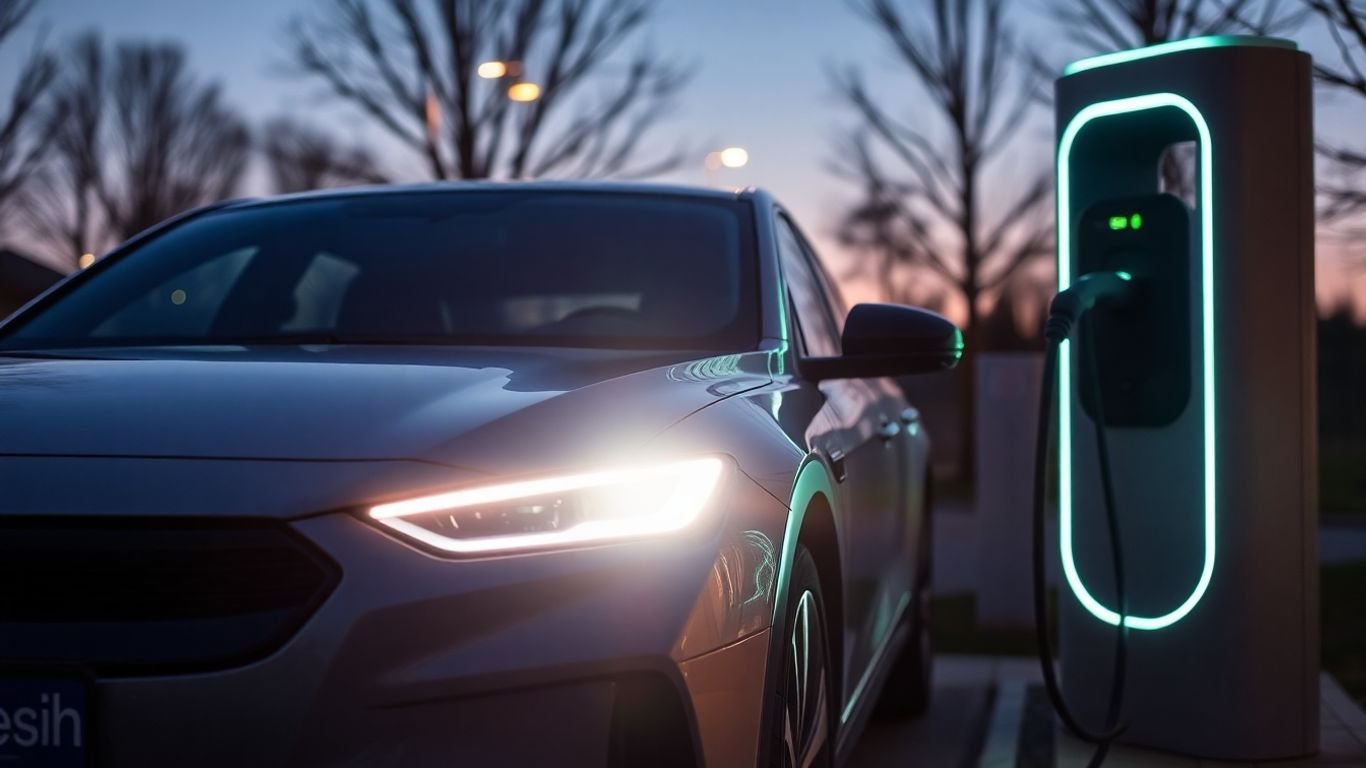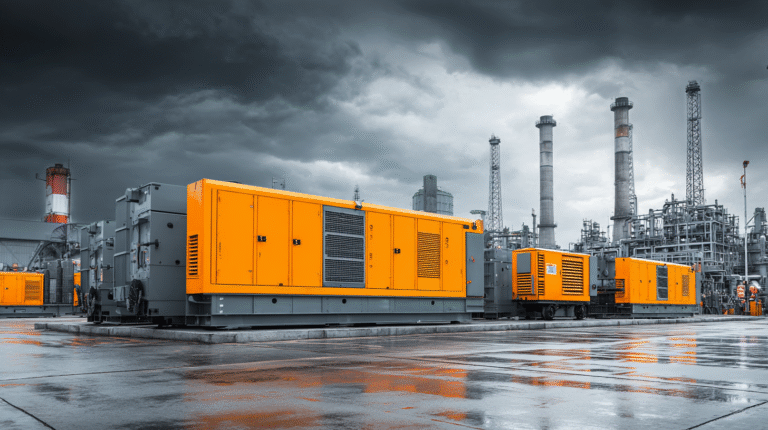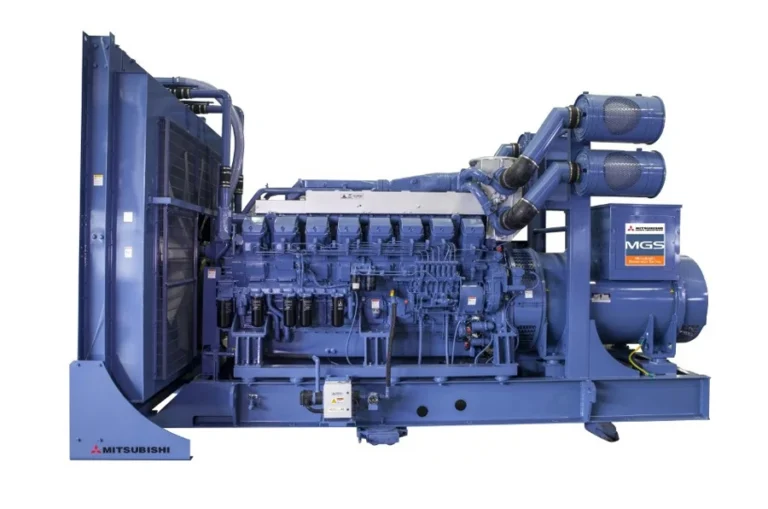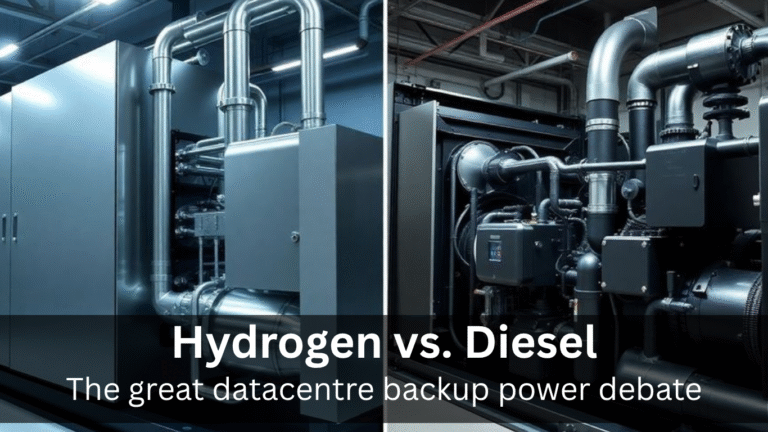Navigating the Future: A Comprehensive Guide to EV Charging Stations
Electric cars are becoming more common, and that means we need more places to charge them. This guide is all about those places – EV charging stations. We’ll look at what they are, why they’re important, and what the future holds for them. If you’re thinking about getting an EV or just curious about how charging works, stick around.
Key Takeaways
- EV charging stations are key to making electric cars practical for more people. They come in different types, offering various charging speeds.
- Public charging spots help ease worries about running out of power and make EVs usable for longer trips and in cities.
- You can find different ways to charge: Level 1 uses a regular outlet, Level 2 is faster for homes and businesses, and DC Fast Charging is for quick power-ups on the go.
- Apps and online tools are super helpful for finding EV charging stations, checking if they’re working, and even starting a charge.
- Planning your charging stops, using apps wisely, and understanding how charging speed changes can make your EV experience smoother.
Understanding EV Charging Stations
So, you’re thinking about getting an electric car, or maybe you already have one and are trying to figure out this whole charging thing. It can seem a bit confusing at first, but it’s really not that complicated once you get the hang of it. Think of EV charging stations like gas stations, but for electricity. They’re the places where you plug in your car to give its battery a boost.
The Role of EV Charging Equipment
At the heart of every charging station is the equipment that actually does the charging. This is often called Electric Vehicle Supply Equipment, or EVSE for short. It’s not just a simple plug; it’s a smart device that talks to your car to make sure the electricity flows safely and efficiently. It manages the power, checks for any issues, and tells your car when it’s done charging. The EVSE is the critical link between the power grid and your vehicle’s battery.
Variations in Charging Speed and Power
Not all charging is created equal, and that’s a good thing. You’ve got different speeds and power levels, kind of like how you can get a quick espresso or a slow-drip coffee. The speed depends on the type of charger and how much power it can deliver. This is super important because it affects how long you’ll be waiting to get enough charge to get going again. Some chargers are quick top-ups, while others are meant for when you have more time, like overnight.
Here’s a quick look at the common levels:
- Level 1: Uses a regular household outlet (120V). It’s slow, but convenient for home use when you can leave your car plugged in for hours.
- Level 2: Uses a higher voltage outlet (240V), similar to what an electric dryer uses. These are much faster and are common in public places and many homes.
- DC Fast Charging: These are the big guns, delivering a lot of power very quickly. They can add significant range in just minutes, making them ideal for road trips.
Compatibility with Different EV Models
When you’re looking at charging, you also need to think about whether the charger will work with your specific electric car. Most EVs sold today use a standard connector, but there are a few different types out there. The good news is that most public charging stations are equipped with connectors that fit the majority of electric vehicles. You can usually find out which connectors a station has by checking its description, often through a mobile app. It’s always a good idea to know what kind of plug your car uses, but generally, you’ll find options available. You can explore different types of EV chargers and plugs to get a better idea of what’s out there here.
It’s important to remember that charging your EV is a straightforward process. While there are different levels of charging speed and power, the infrastructure is designed to be user-friendly. Most of the time, you’ll find a compatible charger easily, especially with the help of mobile apps that provide detailed information about station types and availability.
Think of it this way: you wouldn’t expect every single gas pump to be identical, right? The same applies to EV charging. The variety in charging speeds and connector types is all about giving drivers options to fit their needs, whether they’re just topping up at home or need a rapid charge on a long journey.
The Importance of Public Charging Infrastructure
So, you’ve got an electric car, or you’re thinking about it. That’s great! But one of the first things people wonder about is, ‘Where do I charge it when I’m out and about?’ That’s where public charging stations really come into play. They’re not just a nice-to-have; they’re becoming a pretty big deal for making electric cars work for everyone.
Addressing Range Anxiety for EV Drivers
Let’s be honest, the thought of running out of battery miles from home is a worry for many. This is often called ‘range anxiety.’ Public charging stations are the direct answer to this. By having chargers available in places like shopping centers, rest stops along highways, and even downtown areas, drivers can feel much more confident about taking their EVs on longer trips or even just their daily errands without constantly checking the battery meter. It’s about giving people the freedom to drive without that nagging worry.
Enhancing Accessibility in Urban Centers
Think about people living in apartments or condos. Not everyone has a garage or a driveway where they can easily install a home charger. Public charging stations, especially those in city centers and multi-unit dwellings, become absolutely vital for these folks. They make owning an EV a real possibility, not just for homeowners, but for a much wider group of people. This helps make electric transportation more inclusive.
Supporting Long-Distance Electric Travel
Road trips in an EV used to sound like a logistical puzzle. But with a growing network of public charging stations along major routes, those long journeys are becoming much more practical. You can plan your stops around charging, maybe grabbing a coffee or a meal while your car powers up. This infrastructure is what truly opens up the possibility of using an EV for everything, from your daily commute to cross-country adventures.
Here’s a quick look at how public charging helps:
- Reduces ‘range anxiety’: More chargers mean less worry about getting stranded.
- Supports apartment dwellers: Provides charging for those without home charging options.
- Enables road trips: Makes long-distance travel feasible and convenient.
- Boosts EV adoption: As charging becomes easier, more people will consider switching to electric.
The expansion of public charging isn’t just about convenience; it’s about building trust in electric vehicles. When people see chargers everywhere, they start to believe that EVs are a practical choice for their lives, not just a niche product.
Exploring Different EV Charging Solutions
So, you’ve got an electric car, or you’re thinking about getting one. That’s awesome! But then comes the question: how do you actually charge this thing? It’s not as complicated as it might seem, and thankfully, there are a few main ways to do it, each with its own perks. Think of it like choosing between a quick coffee run, a sit-down lunch, or a full-on dinner – they all get you fed, but at different paces and for different needs.
Level 1 Charging: Standard Household Outlets
This is the most basic way to charge your EV, and honestly, it’s pretty simple. You just need a regular wall outlet – the kind you plug your toaster or lamp into. It’s slow, though. Like, really slow. We’re talking maybe 2 to 5 miles of range added for every hour you’re plugged in. It’s perfect if you don’t drive much during the day and can leave your car plugged in overnight, or if you have a plug-in hybrid that you don’t need to charge up fully every single day. It’s the ‘set it and forget it’ option, but you have to be patient.
- Pros: No special equipment needed, just your car’s charging cord and a standard outlet. It’s universally available.
- Cons: Very slow charging speeds. Not practical for daily drivers who need a significant charge.
- Best for: Plug-in hybrids, overnight charging for low-mileage drivers, or as a backup.
Level 2 Charging: Faster Residential and Commercial Options
This is where things start to pick up the pace. Level 2 charging uses a 240-volt outlet, similar to what an electric dryer or oven might use. You’ll find these at many homes (often installed by an electrician) and increasingly at workplaces, shopping centers, and public parking lots. A Level 2 charger can add about 20 to 30 miles of range per hour, which is a big jump from Level 1. This is the sweet spot for most EV owners, offering a good balance between charging speed and installation complexity. It means you can often get a full charge overnight or top up significantly while you’re out running errands or at work.
- Installation: Usually requires a dedicated 240V circuit and professional installation for home use.
- Speed: Significantly faster than Level 1, adding substantial range in a few hours.
- Availability: Common in new homes, public parking, workplaces, and shopping areas.
DC Fast Charging: Accelerating the EV Revolution
When you’re on a road trip and need to get going now, DC Fast Charging (often called Level 3) is your best friend. These are the big, powerful chargers you see at dedicated charging hubs. They bypass your car’s onboard charger and deliver direct current (DC) power straight to the battery.
This means you can add a huge amount of range – often 100 to 200 miles or more – in just 20 to 30 minutes. It’s not quite as fast as filling up a gas tank, but it’s close enough for most long-distance travel. Keep in mind, these are usually found along major highways and in urban centers, and they tend to be more expensive per kilowatt-hour than Level 1 or Level 2 charging.
DC Fast Chargers are the backbone of long-distance EV travel. They are designed for quick top-ups, allowing drivers to add significant range in the time it takes to grab a coffee or a quick meal. While not ideal for daily use due to cost and availability, their role in making EVs practical for extended journeys cannot be overstated.
- Speed: The fastest option available, capable of adding hundreds of miles of range in under an hour.
- Use Case: Ideal for road trips and quick charging needs.
- Infrastructure: Primarily located along major travel routes and in high-traffic areas.
Navigating Charging Station Networks
Finding a place to charge your electric car used to feel like a treasure hunt, but it’s gotten a lot easier. Several apps and services are out there to help you locate charging stations, understand what they offer, and even start a charging session without much fuss. It’s all about knowing where to look and what tools to use. Think of it like using a GPS for your car, but for its power source.
Utilizing Mobile Apps for Station Discovery
Mobile apps have become the go-to for EV drivers. They’re packed with information that can save you time and frustration. You can see where stations are, if they’re working, and how fast they can charge your car. Some apps even let you see what other drivers thought of a particular station, which is super helpful.
Here are some of the most popular apps:
- PlugShare: This is a big one. It has a huge database of stations worldwide and lets you filter by things like free charging, charger type, and if it’s available right now. People leave reviews and tips, kind of like a community guide.
- ChargePoint: Known for its large network, ChargePoint also helps you plan routes and gives you details on charger types and costs.
- Electrify America: If you need a fast charge, this app is great. It focuses on Level 3 chargers, which can get you back on the road quickly.
Understanding Network Provider Features
Each charging network has its own way of doing things. Some might have better apps, others might offer more charging spots in certain areas, and pricing can vary a lot. It’s worth looking into the networks that are common where you live or where you plan to travel.
- Network Size: How many stations does the provider have? Are they concentrated in cities or spread out along highways?
- Charger Types: Do they offer fast charging (DCFC) or just slower Level 2 chargers?
- Pricing Models: Some charge by the minute, others by the kilowatt-hour (kWh), and some might have monthly fees or subscriptions.
- Reliability: Check reviews to see how often stations are reported as broken or unavailable.
It’s a good idea to get familiar with a couple of the major charging networks in your region. This way, you’ll know what to expect when you pull up to a charger and won’t be surprised by the process or the cost. Knowing the network helps you plan better.
Initiating Charging Sessions Remotely
Starting a charge used to involve a physical card or sometimes even a phone call. Now, most networks let you start and stop charging right from their mobile app. This is super convenient. You can often see the charging progress on your phone too, so you don’t have to keep checking your car.
Here’s a general idea of how it works:
- Open the App: Find the station on the app and select the specific charger you’re using.
- Start Charging: There’s usually a button to begin the session.
- Monitor Progress: Watch your phone to see how much charge you’re getting and when it’s done.
- End Session: Stop the charge through the app and check your bill.
This remote control feature makes charging much more flexible and less of a hassle.
Strategic Tips for EV Charging

Alright, so you’ve got your electric car, and you’re ready to hit the road. But how do you make sure you’re charging up efficiently and without any headaches? It’s not just about plugging in; there are some smart ways to approach it. Planning your charging stops can actually make your trips more enjoyable and less stressful.
Planning Charging Stops with Activities
Think of charging your EV like stopping for lunch or a coffee break. Instead of just pulling over to charge and waiting around, try to combine it with something you were already going to do. If you’re heading out for a shopping spree, look for chargers at the mall or a nearby shopping center. Need to grab some groceries? Many supermarkets now have charging stations. This way, your car gets juiced up while you’re busy, saving you precious time. It’s all about making your EV journey fit into your life, not the other way around. You can find great spots for this kind of combined stop by checking out resources like the Alternative Fueling Stations Map.
Maximizing Charging Efficiency
Here’s a little secret about EV charging: it’s not a straight line. The speed at which your battery fills up slows down quite a bit once it gets past 80%. So, if you’re on a long trip and need to get going quickly, it’s often faster to charge to about 80% and then move on to the next charger down the road, rather than waiting for a full 100%. This is especially true for DC fast chargers. Think of it as getting the most bang for your buck in terms of time spent charging.
Here’s a quick rundown:
- Level 2 Chargers: Good for overnight or longer stops. Expect about 25 miles of range added per hour.
- DC Fast Chargers: Great for quick top-ups. You can often get to 80% in around 30 minutes.
- Charging Beyond 80%: Takes significantly longer for a smaller gain in range.
Understanding how charging speeds change is key. Don’t just assume a full charge is always the fastest option when you’re in a hurry. Sometimes, a partial charge is more practical for keeping your travel momentum going.
Using Charging Apps Effectively
These apps are your best friends when it comes to finding and using charging stations. Don’t just open one and pick the closest one. Take a minute to explore the features. Most apps let you filter stations by charging speed, connector type, and even real-time availability. Some even let you add your specific EV model, which helps ensure compatibility. You can also often see reviews from other drivers, giving you a heads-up on whether a station is working well or if there are any issues. It’s like having a community of EV drivers sharing their experiences to help you out.
Alternative Tools for Finding EV Charging Stations
Beyond the popular apps, there are other ways to locate EV charging spots. Sometimes, you just need a quick look-up, and these resources can be super handy.
Government and Mapping Service Resources
The U.S. Department of Energy offers a tool called the Alternative Fueling Stations Map. It’s a solid source for finding all sorts of fueling stations, including EV chargers. It’s pretty reliable because the data comes straight from the government. For everyday searches, Google Maps and Waze are also useful. Just type in “EV charging stations” and you’ll get a list of nearby options. While they’re convenient for quick checks, they might not have as much detail as dedicated EV apps.
Specialized Charging Network Applications
Some charging networks have their own apps that can be really helpful. For instance, EVgo, which runs a large fast-charging network, lets you reserve a spot ahead of time. This is great if you want to make sure a charger is free when you get there. Another app, ChargeHub, not only shows you charger availability across the U.S. but also lets you start and pay for charging at many stations right from the app. It’s like having a universal key for a lot of charging points.
Community-Driven Station Information
While not strictly a tool, community input is a big deal. Apps like PlugShare rely heavily on users sharing their experiences. People leave reviews, post photos, and give tips about specific stations. This kind of real-world feedback can tell you if a charger is working well, if it’s easy to access, or if there’s a great coffee shop nearby while you wait. This user-generated content is often the most up-to-date and practical information you can find.
Here’s a quick look at some of these resources:
- U.S. Department of Energy Alternative Fueling Stations Map: Government-backed data for a wide range of fueling options.
- Google Maps & Waze: Easy-to-use for general searches of nearby chargers.
- EVgo App: Allows for reservations at their fast-charging locations.
- ChargeHub: Offers availability info and in-app payment for many chargers.
Relying on a mix of these tools can help you stay charged up, whether you’re on a short trip across town or a long journey across the country. It’s all about having the right information at your fingertips.
The Future of EV Charging Stations

The world of electric vehicles is changing fast, and so are the ways we charge them. It’s pretty exciting to think about what’s coming next. We’re not just talking about more charging spots, but smarter, quicker, and more accessible ways to power up our EVs.
Anticipating Increased Accessibility
As more people decide to go electric, the number of places to charge is going to keep growing. This means you’ll likely find charging stations popping up in more neighborhoods, shopping centers, and even along those less-traveled roads. The goal is to make sure that no matter where you are, finding a charge won’t be a hassle. More charging stations mean less worry about where your next charge will come from. This expansion is key to making EVs a practical choice for everyone, not just city dwellers or those who stick to main highways. It’s about making EV ownership as easy as possible.
Advancements in Faster Charging Technology
Nobody likes waiting around, and that’s especially true when you need to charge your car. The good news is that charging technology is getting a serious speed boost. We’re seeing new chargers that can add a significant amount of range in just a few minutes. Think about it: you pull over for a quick coffee, and by the time you’re done, your car is ready for hundreds more miles. Future EVs will also be built to take advantage of these super-fast chargers, making long trips much more manageable. It’s all about reducing downtime and getting you back on the road quicker. You can already find some of these faster options, and they’re only going to get better and more common.
The Rise of Smart Charging Solutions
This is where things get really interesting. Smart charging isn’t just about plugging in your car; it’s about charging intelligently. These systems can talk to the power grid and your utility company. What does that mean for you? Well, it can mean charging your car when electricity is cheapest, usually overnight. It can also help the power grid by not all charging at the same time during peak hours.
This helps keep the grid stable and can even lower your electricity bills. Plus, many smart charging systems can be controlled right from your phone, letting you set charging schedules or check on your car’s status from anywhere. It’s a big step towards making EV charging more efficient and cost-effective for everyone involved.
We’re looking at a future where your car charging is working for you, not just when you need it, but also when it makes the most sense economically and for the grid. This technology is becoming a standard feature, and it’s something to keep an eye on as you look at new EVs or charging equipment. You can find more about the evolving charging landscape at Blink Charging.
Wrapping Up Your EV Charging Journey
So, that’s pretty much the rundown on EV charging stations. It’s gotten a lot easier to find places to juice up your electric ride, thanks to all those handy apps out there. Whether you’re just topping off at home or planning a big trip, knowing your options makes a difference. The charging network is growing all the time, which is good news for everyone thinking about going electric. It’s all about making the switch smoother and helping us all move towards cleaner ways to get around. Keep an eye on new tech, and happy charging!
Frequently Asked Questions
What are the different ways to charge an electric car?
You can charge an electric car using three main types of chargers. Starting with Level 1, it uses a regular home outlet and is the slowest option. Level 2 offers faster charging and is commonly found at homes, workplaces, or public locations. Level 3, also known as DC Fast Chargers, provides ultra-fast charging—adding a significant amount of power in about 30 minutes, making it ideal for road trips.
How long does it usually take to charge an electric car?
Charging times can really change depending on the charger type and your car. A Level 1 charger might take all night. Level 2 chargers can add about 25 miles of range per hour. DC Fast Chargers are the quickest, often getting your car to 80% in around 30 minutes. It’s often best to stop charging around 80% because it slows down a lot after that.
How can I find charging stations when I’m out?
Finding charging stations is pretty easy now! You can use helpful phone apps like PlugShare or ChargePoint. These apps show you where stations are, if they’re working, and what kind of chargers they have. Some apps even let you see reviews from other drivers.
Is it better to charge at home or at public stations?
Charging at home is usually cheaper and more convenient, like charging your phone overnight. Public stations are great for when you’re on the go, especially the fast chargers if you need a quick boost. Many people use both – charging at home most of the time and using public stations for longer trips.
What should I do if I find a broken charging station?
If you find a charging station that isn’t working right or looks damaged, it’s important to let someone know. Most apps have a way to report issues, or you can contact the company that runs the charging station. This helps keep the stations in good shape for everyone.
What’s the future of electric car charging look like?
The future looks really promising! We’ll likely see many more charging stations available everywhere, making it easier to charge up. Charging technology is also getting faster, so you won’t have to wait as long. Plus, ‘smart charging’ will help manage when cars charge to save energy and money.









One Comment